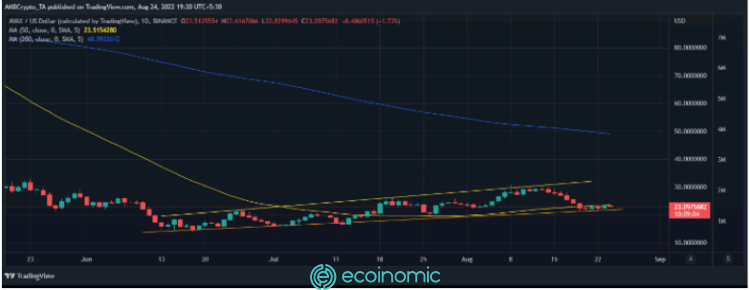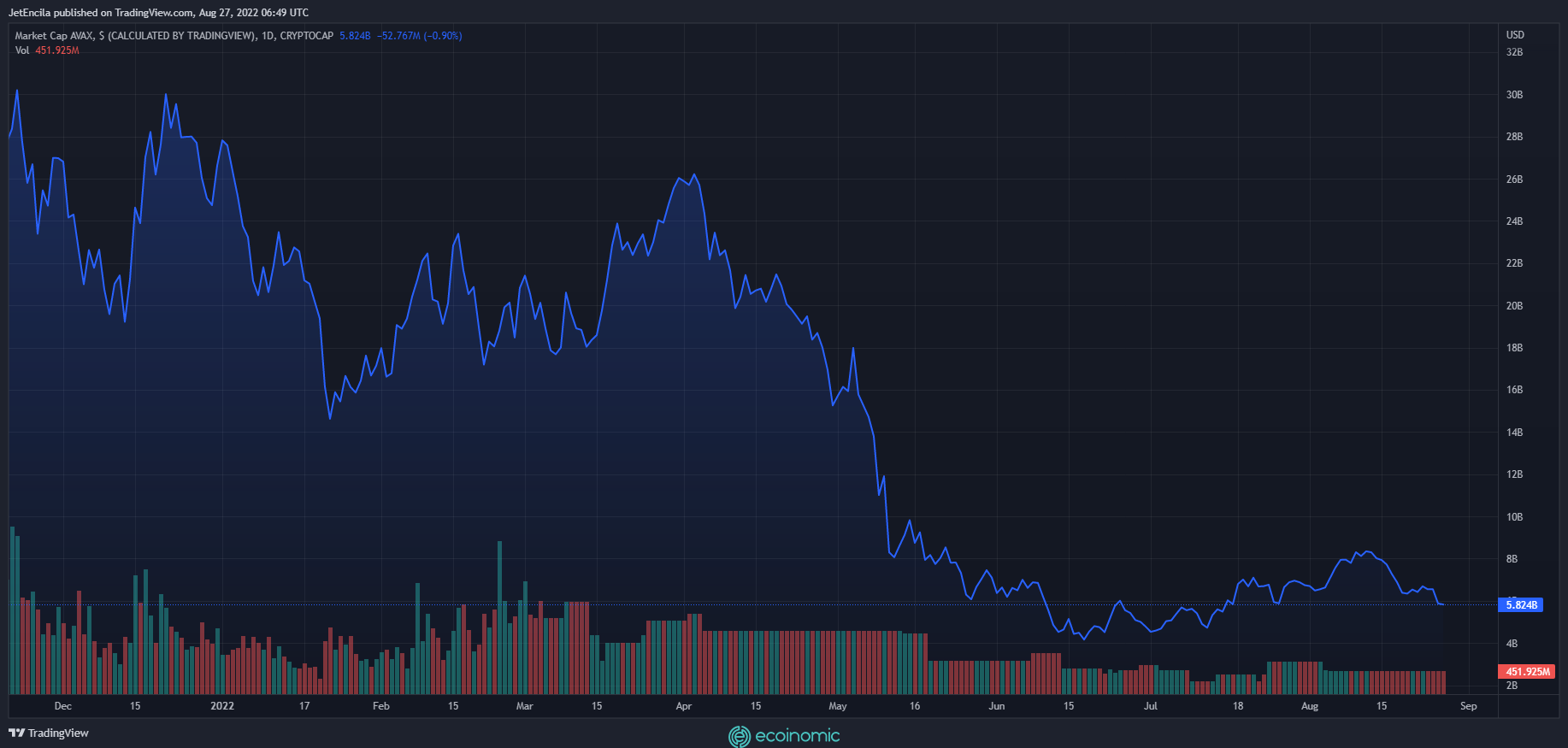Advertisement
Avalanche (AVAX) has accelerated its own development, despite market setbacks and negative circumstances over the past few weeks.
Due to unfavorable market conditions, AVAX’s Market Cap has fallen by almost $2 billion over the past two weeks, but it is now trying to recover.
At the time of writing, the Avalanche’s market cap stands at $5.8 billion, well below the monthly high but above the monthly low.
Support line revolving around the price of Avalanche
It should be noted that over the past five days, AVAX has detoured its support line.
The bullish range has fluctuated over the past nine weeks with the same support line. When the Avalanche dropped to nearly $22.62, the study showed a bearish trend in the market.
The $23.63 level is currently acting as resistance for the AVAX/USD pair and it must be broken for the pair to move higher. But it is likely that the bears will take over the market and push the price down to the $22.52 support level.
One-day Avalanche price analysis verified the negative trend, and the price is now falling again. The AVAX/USD pair has been declining since last week and is currently trading at $20.58.
The movement of the price continues to be restrained by two parallel trendlines. And the market is moving in a descending line.
If selling pressure persists, the price is expected to continue to decline and potentially break the $22.52 support level.

AVAX price experiences a high level of uncertainty
Avax’s current price has a high level of uncertainty. Despite the market uncertainties, AVAX’s market sentiment is now shifting in favor of the bulls.
The market is clearly in a negative trend, as evidenced by the 4-hour price chart for Avalanche price analysis. The market is losing momentum and is predicted to decline in the near future, and falling volumes are another sign of this.
On the downside, the bulls could push the price up to retest the $23.63 resistance level if they can take control of the market.
The signal line is moving on the chart, which is a negative indicator. Another sign that the market is falling is that the Relative Strength Index (RSI) is below the 50 levels. $21.15 and $22.06 are 50-day and 200-day moving averages, respectively.

















